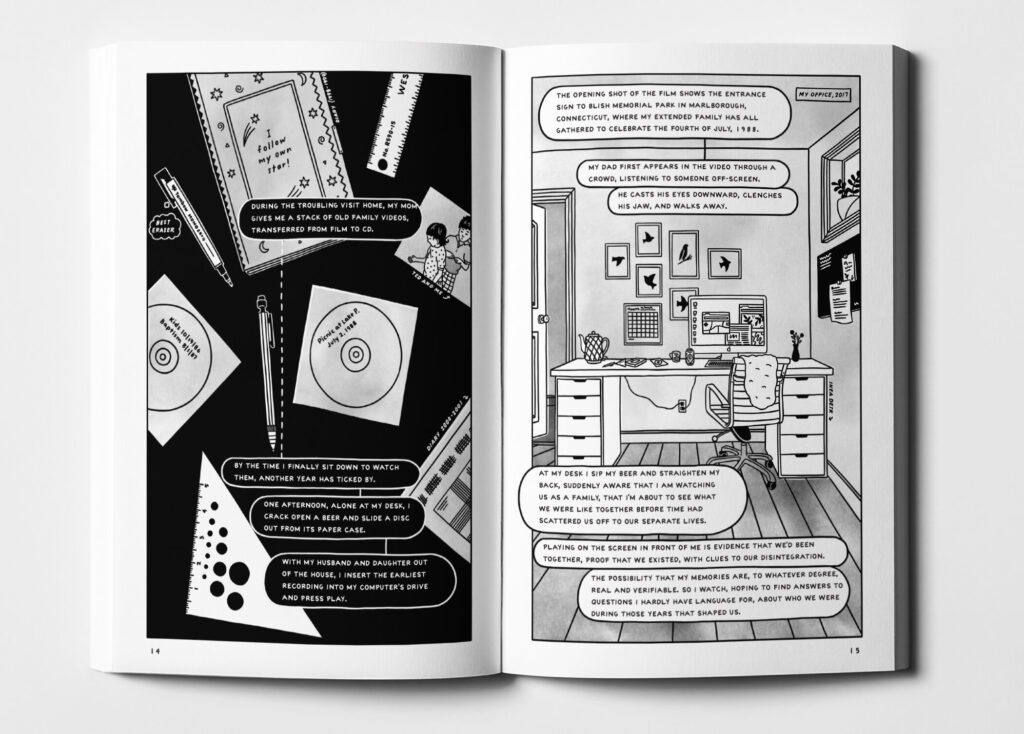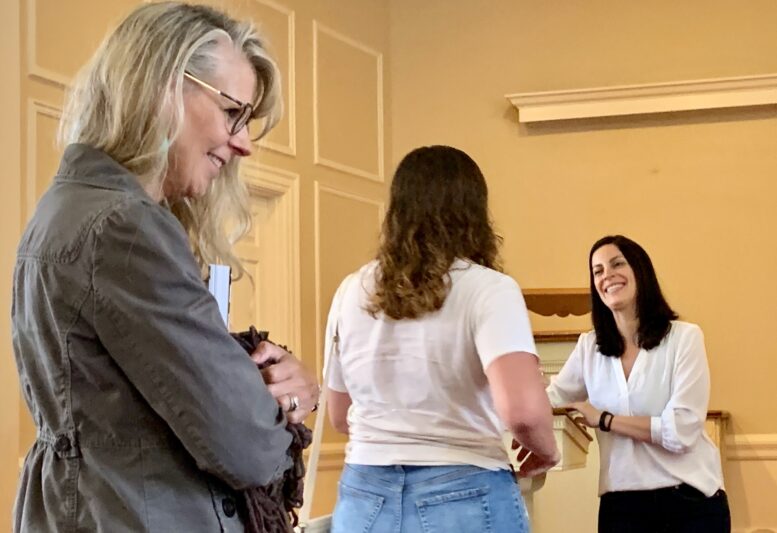By JULIE CARLE
BG Independent News
Words and images are indispensable to Margaret Kimball, author and illustrator of two graphic memoirs and a recent speaker at Bowling Green State University.
Kimball’s 2021 graphic memoir, “And Now I Spill the Family Secrets,” told the story of her family’s dysfunction and mental illness. Writing a graphic memoir was a goal of the long-time illustrator and graphic designer.
Once the book was published, she had met her goal and was convinced she didn’t want to create another one. “But I started to feel a feeling” and she had an idea for a second graphic memoir, “A Brief History of My Affairs.” The book is under contract with a proposed 2025 publication date.

She enjoys the process of creating a graphic memoir, using words and illustrations to tell the story.
“I’m always thinking about design when I think about how to compose a page” of a graphic novel, she said. “What’s amazing about illustration and design is that you can get a powerful and immediate effect from a reader.”
When she wants the reader to have a slower, deeper engagement with the story, she uses carefully chosen words.
“Graphic memoirs, which combine text and graphics or illustrations about someone’s life, have more of a history than we give them credit,” said Amanda McGuire Rzicznek, BGSU senior lecturer in English. “It has some roots in comics or zine culture but has gained more traction and become more mainstream in the past 20 years. It seems relatively new, but it’s been around for a while.”
The talk, tied to BGSU’s new minor in word and image, gave students the opportunity to talk to Kimball and “pick her brain” as someone working as a graphic memoirist, said Rzicznek, who facilitated the Q&A session.
Kimball, who earned two MFA degrees in illustration and creative writing from the University of Arizona, wasn’t sure what her career would look like after she graduated.
She started as a full-time illustrator and also worked as a hand-letterer and graphic designer before delving into the world of graphic novels. Being a freelance illustrator satisfied her creative life but it was hard to be financially stable, she said. “I wanted to start a family and renovate my house. It would have been hard to do those things as an illustrator.”
She has transitioned from being a full-time illustrator to being a creative director and co-founder with her brother for a skincare company. She had to give up the “damaged notion that if you work for a corporation, you are not an artist,” she said.
The corporate job in the skincare industry provides a salary and a set daily schedule.
“I like the balance of working 8:30 to 4 with a team of four or five people but also getting up early between 4 and 7. It is quiet time, me time, that I spend writing,” working on her second book, she said.
When asked how to get published, Kimball suggested students take time to look at the various literary magazines to find the ones they like and that feature creative entries similar to their work.
There are so many options to consider, from undergraduate magazines to The New Yorker. “Don’t be afraid to submit to as many magazines as you want,” she said, rather than sending in proposals to one magazine at a time.
She also likes to use social media—particularly Instagram because it’s so visual—to build her audience and reputation.
About the writing process, Kimball said she likes to use conversational tones, but she doesn’t worry about maintaining that tone in the writing process. Instead, she uses the revision process to fine-tune the writing. “In the revision process is when you feel it. You ask yourself, ‘Why isn’t the scene working? How do I tell my story?’”
Kimball also urged students not to become overwhelmed by thinking too big. “You don’t have to start with a graphic memoir. Lower your expectations and start with one page, four panels, and become more comfortable. Life is long; do what you want to do,” she recommended.

